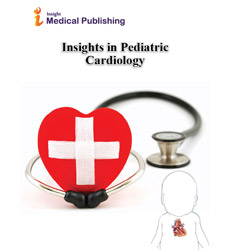Abstract
TROPONINI AND ITS RELATION TO DISEASE SEVERITY IN PAEDIATRIC HYPERTROPHIC CARDIOMYOPATHy
Troponin is associated with increased risk of adverse outcomes and correlates with multiple parameters of disease severity in adults with hypertrophic cardiomyopathy (HCM). However, prognostic and staging markers in adults are not always of value in children with HCM. This study assessed the ability of troponin I (TnI) to predict clinical variables in a paediatric cohort of HCM and compare this to well-established biomarker, NT-proBNP. TnI and NT-proBNP were measured in forty-nine patients with HCM [10.69±5.34 years old, 32 (65.31%) male] and elevated TnI is defined as ≥34ng/L (99th percentile reference limit). Evaluation included ECG, echocardiography, ambulatory ECG [19 (38.78%)], ICD interrogation [9 (18.37%)], exercise testing [19 (38.78%)], and cardiac magnetic resonance (CMR) imaging [16 (32.65%)]. TnI was detected in 19 (38.78%) and ≥34 ng/L in 14 (28.57%). There were significant differences in maximum wall thickness (MWT) z-score, E/E’, mitral E-wave deceleration time, and CMR-assessed LV mass index between patients with TnI<34ng/L and TnI≥34ng/L. Continuous TnI, but not NT-proBNP, correlated with global longitudinal strain (rs=0.62, p<0.001), and there were significant differences in TnI levels in patients with ST-segment changes, and late gadolinium enhancement. Both biomarkers correlated with MWT z-score and E/E’, although correlations were stronger for NT-proBNP. Multivariate analysis revealed TnI was an independent predictor of MWT and LV mass index. Troponin is a reliable biomarker to identify features of HCM (extreme hypertrophy and diastolic dysfunction) and may be an additive monitoring parameter in children. However, the utility beyond NT-proBNP, and the ability to identify subclinical ischaemia and fibrosis is uncertain.
https://marmaris.tours
https://getmarmaristour.com
https://dailytourmarmaris.com
https://marmaristourguide.com
https://marmaris.live
https://marmaris.world
https://marmaris.yachts
Author(s):
Sarah Watson
Abstract | PDF
Share this

Google scholar citation report
Citations : 5
Insights in Pediatric Cardiology received 5 citations as per google scholar report
Insights in Pediatric Cardiology peer review process verified at publons
Abstracted/Indexed in
- Google Scholar
- Secret Search Engine Labs
Open Access Journals
- Aquaculture & Veterinary Science
- Chemistry & Chemical Sciences
- Clinical Sciences
- Engineering
- General Science
- Genetics & Molecular Biology
- Health Care & Nursing
- Immunology & Microbiology
- Materials Science
- Mathematics & Physics
- Medical Sciences
- Neurology & Psychiatry
- Oncology & Cancer Science
- Pharmaceutical Sciences

